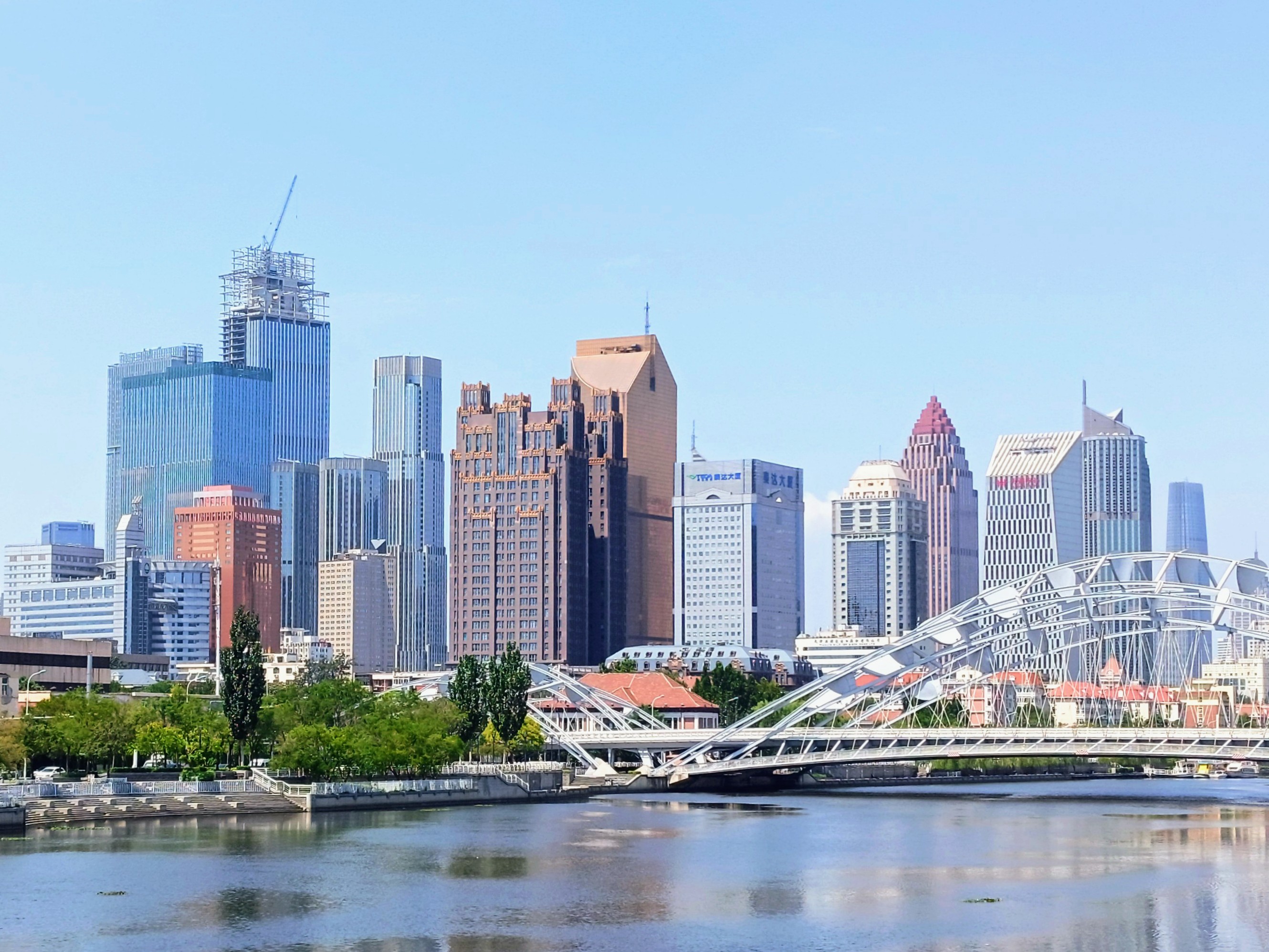Tianjin
 | p = Tiānjīn
| tp = Tianjin
| w = Tien1-chin1
| bpmf = ㄊㄧㄢ ㄐㄧㄣ
| gr = Tianjin
| mi = | (locally)}}}}
| psp = Tientsin
| j = tin1 zeon1
| ci = ''or''
| y = Tīnjèun ''or'' Tīnjēun
| wuu = Thie平-tsin平
| poj = Thian-tin
| showflag = p
}}
| p = Tiānjīn
| tp = Tianjin
| w = Tien1-chin1
| bpmf = ㄊㄧㄢ ㄐㄧㄣ
| gr = Tianjin
| mi = | (locally)}}}}
| psp = Tientsin
| j = tin1 zeon1
| ci = ''or''
| y = Tīnjèun ''or'' Tīnjēun
| wuu = Thie平-tsin平
| poj = Thian-tin
| showflag = p
}}Tianjin; Mandarin: ; previously romanized as Tientsin ()}} is a direct-administered municipality in Northern China on the shore of the Bohai Sea. It is one of the nine national central cities, with a total population of 13,866,009 inhabitants at the time of the 2020 Chinese census. Its metropolitan area, which is made up of 12 central districts (other than Baodi, Jizhou, Jinghai and Ninghe), was home to 11,165,706 inhabitants and is also the world's 29th-largest agglomeration (between Chengdu and Rio de Janeiro) and 11th-most populous city proper.
Tianjin is governed as one of the four municipalities (alongside Beijing, Shanghai, and Chongqing) under the direct administration of the State Council of China. The city borders Hebei Province and Beijing Municipality, bounded to the east by the Bohai Gulf portion of the Yellow Sea. Part of the Bohai Economic Rim, it is the largest coastal city in Northern China and part of the Jing-Jin-Ji megapolis.
In terms of urban population, Tianjin is the seventh largest city in China. In terms of administrative area population, Tianjin ranks fifth in mainland China. The walled city of Tianjin was built in 1404. As a treaty port since 1860, Tianjin has been a seaport and gateway to Beijing. During the Boxer Rebellion, the city was the seat of the Tianjin Provisional Government. Under the Qing dynasty and the Republic of China, Tianjin became one of the largest cities in the region. At that time, European-style buildings and mansions were constructed in concessions, some of which are preserved today. After the founding of the People's Republic of China, Tianjin suffered a depression due to the policy of the central government and the 1976 Tangshan earthquake; however, it has been recovering since the 1990s. Tianjin is classified as the largest type of port city, a Large-Port Megacity, due to its large urban population and port traffic volume.
Tianjin is currently a dual-core city, with its main urban area (including the older part of the city) located along the Hai River, which connects to the Yellow and Yangtze Rivers via the Grand Canal; and Binhai, an adjacent New Area urban core located east of the older part of the city on the coast of the Bohai. As of the end of 2010, approximately 285 Fortune 500 companies have operated in buildings located in Binhai. Since 2010, Tianjin's Yujiapu Financial District has become known as China's Manhattan and the city is considered to be one of the world's top 100 cities,[
Tianjin is one of the 20 cities in the world with the highest scientific research outputs, as tracked by the Nature Index. The city is also home to multiple institutes of higher education in Northern China, including Tianjin University, Nankai University, Tianjin Normal University, Tianjin Medical University, Tianjin Foreign Studies University, Tiangong University, Tianjin University of Science & Technology, Tianjin University of Technology, and Hebei University of Technology. Provided by Wikipedia
-
1
-
2
-
3
-
4
-
5
-
6
-
7
-
8
-
9
-
10
-
11
-
12
-
13
-
14
-
15
-
16
-
17
-
18
-
19
-
20
